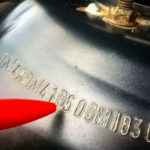In each room, the number in the numerator is indicated by the number of base wires per 25 mm (1 “) weaving length, and in the denominator – the number of wires of the duck by 25 mm width of the net. The most profitable net number is determined by sifting the soil of the aquifer through various filter nets. The grid is accepted that, when sifting, passed through its holes with gravial soils 30-40%, with pebbles of 20-30%, with sandy 70-80%of the sand. For sand aquifers, mesh nets are used: 6/50, 8/70 and 10/80. For very large sands, gravel and pebbles are selected a rare mesh of a simple fabric with a diameter of the base wires and a duck of 1-2 mm and a diameter of holes of 1-4 mm. The grid is fixed on the frame by soldering. First, the grid is soldered with one edge of the seam, then pulled around the frame and the edge of the second seam is soldered. Previously, soldering places on a hole pipe (frame), as well as on the wire are cleaned with a file and a skin, then covered with tin (beam), after which they are already soldered by a net of galunar weaving, taking into account the wire duck to go parallel to the axis of the filter Pipes. This arrangement of the grid provides greater strength during the descent and extracting the filter. At the ends of the filter, the grid is also soldered and, in addition, grabbed with clamps from strip iron or tightly wrapped with wire, the ends of which are twisted. To protect against stripping with direct contact with pipes when exposing filters, a thick iron wire is sometimes soldered along the length of the filter. After soldering the grid, the lower end of the filter pipe is tightly clogged with a dry oak traffic jam made in the form of a cone facing the top down. A coupling has two cuts from the opposite sides in the form of an overturned letter G to the upper end of the pipe.
Why is it so important to pay attention to the net number
drivingnewsusa






